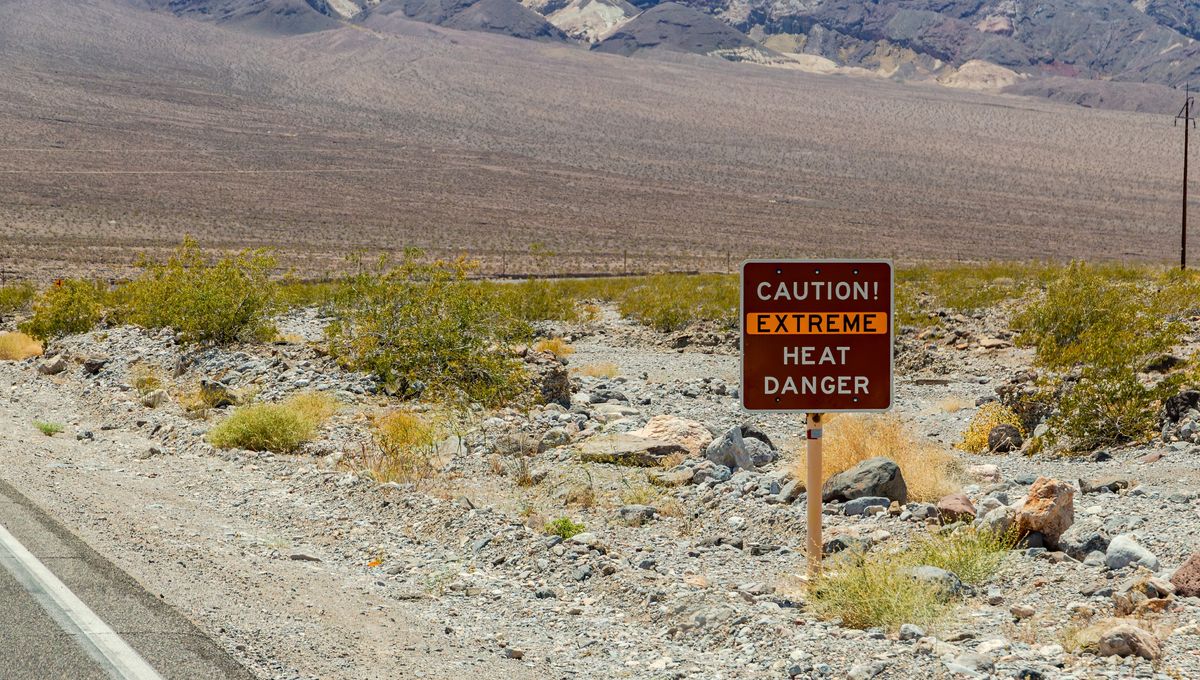
Millions of people will visit the USA’s various national parks this summer. But as temperatures continue to rise, visitors are being urged to consider the risks of extreme heat; it is not only a threat to their health, but makes rescue missions more dangerous too.
To say Death Valley is a hot place would be a hell of an understatement (pun intended). It is both the hottest place on Earth and the driest in North America. In summer, temperatures often tip over 49°C (120°F), and that’s in the shade!
And yet the startlingly beautiful, if not hideously hot, national park is also a hot spot for tourists and avid hikers. Every year, park rangers in Death Valley have to respond to overheated visitors multiple times a week during the summer months. That’s becoming a predictable routine, but in recent years the extreme heatwaves have also led to a number of deaths annually, The Atlantic reports.
Heat exhaustion and heatstroke are a big concern. When our bodies overheat, especially in hot conditions when we are exerting ourselves (such as hiking in summer heat), heat exhaustion can kick in. The symptoms vary, but can include nausea, headaches, heavy sweating, low blood pressure, muscle cramps, fatigue, cool and moist skin with goose bumps despite being in the heat, and even fainting.
But if immediate action is not taken to seek medical aid and to cool off when this occurs, then things can get much worse. Heatstroke is the most serious form of heat injury. It can occur if your body temperature rises to 40°C (104°F) or higher. If untreated, heatstroke can lead to brain damage and also injury to your kidneys and muscles. It can also kill.
This situation is bad enough in easy to reach locations, but for hikers who may experience issues out in the wilds of the USA’s national parks, it is even more troubling. For instance, the average summer temperatures at Death Valley impact air density. As temperatures rise, air expands and its density decreases. Essentially this means the air becomes too thin for helicopters to take off and to fly safely.
When this happens, rescuers have to search by foot, which can also put them at risk from the same heat. So while they may want to do their utmost the help save struggling hikers, park managers also have to protect their teams’ health too, especially if a lengthy search-and-rescue mission could result in more casualties.
And the situation is likely to only get worse as the effects of climate change bring with them more frequent and increasingly severe heatwaves.
Anyone visiting the parks this year should prepare for the hot weather and consult the National Park Service’s website for advice and updates on local conditions. Pack for heat, including the right food and plenty of water to stay hydrated, make sure you plan your routes and, above all, stop as soon as you start to experience heat-related issues.
[H/T: The Atlantic]
The content of this article is not intended to be a substitute for professional medical advice, diagnosis, or treatment. Always seek the advice of qualified health providers with questions you may have regarding medical conditions.
Source Link: Visitors To US National Parks Face Increased Dangers This Summer